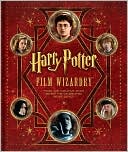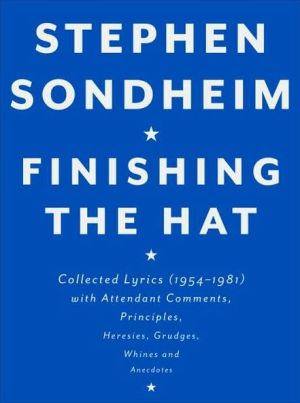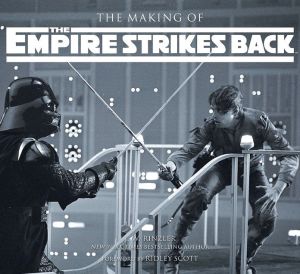Shell Shock Cinema: Weimar Culture and the Wounds of War
Review "Winner of the 2010 Limina Award for Best International Film Studies Book, XVII Udine Film Forum, Udine, Italy""Winner of the 2010 DAAD Book Prize, German Studies Association""Winner of the 2008-9 Aldo and Jeanne Scaglione Prize for Studies in Germanic Languages and Literatures, Modern Language Association""One of Choice's Outstanding Academic Titles for 2010""This long-awaited book by one of the leading experts on German cinema is a landmark in film studies. . . . Clearly written...
Search in google:
"Siegfried Kracauer initiated the first deeply interpretive history of cinema with his work From Caligari to Hitler, in which he claimed that Weimar cinema presaged the rise of Nazism. Now, in Shell Shock Cinema, Anton Kaes offers a fully researched and equally profound work of film history by moving in the other direction, showing how the fantastic cinema of the Weimar era responded to the most explosive event of modern history--World War I. This is cinema scholarship at its most mature and also most adventuresome."--Tom Gunning, author of The Films of Fritz Lang: Allegories of Vision and Modernity"With his deep knowledge of German cultural history, Kaes traces how the ghosts of the dead of World War I--the defining trauma of modernity--haunt all major Weimar films. Shell Shock Cinema is a brilliant book about the threshold between the visible and the invisible in post-traumatic narratives, with war memory displaced into stories of madmen, vampires, mythic heroes, and science fiction. In an entirely new key, Weimar cinema reemerges as a paradigm for our post-traumatic times."--Andreas Huyssen, author of Present Pasts: Urban Palimpsests and the Politics of Memory"Shell Shock Cinema is a superb book. It bristles with insights and will be widely read. Anton Kaes is the leading scholar of German film. His book rises far above the usual writing on the subject because of the very extensive knowledge he brings to bear on each of the films, and the highly acute analyses he continually offers. This is cultural scholarship at its very best."--Eric D. Weitz, author of Weimar Germany"Tony Kaes, an outstanding expert on the Weimar Republic, presents his masterpiece, offering a convincing alternative to Siegfried Kracauer's famous argument. German silent cinema does not prefigure Hitler, but arises from the shell shocks of World War I."--Friedrich Kittler, Humboldt University of Berlin"Forlornly a woman at the beach looks at the crosses marking the graves surrounding her. Those who return from the front haunt their homes as specters of a lost self, those who remain at home are caught in melancholia, unable to relinquish the loss they know only secondhand. An apt visual motto for these original readings of Weimar cinema, which we will never watch in quite the same way ever again."--Elisabeth Bronfen, author of Crossmappings: Essays on Visual Culture"While Weimar psychology took film screening as a metaphor for the replay of World War I trauma under hypnosis, actual movies found relentless metaphors of their own--less as group therapy than in the thrill of referred pain--for a residual war on the nerves. Where Picasso saw cubism in the jigsaw collage of World War I camouflage, Kaes sees in screen montage the jagged forms of combat aftershock. His gripping account is a work of massive historical authority and steady revelation."--Garrett Stewart, author of Framed Time: Toward a Postfilmic Cinema Andreas Killen - H-Madness Kaes' study represents a major departure from earlier approaches. Drawing on a growing body of work on trauma, the history of psychiatry, and World War I, he places this crucial chapter of modern cultural history within an entirely new analytic framework.
Illustrations vii Acknowledgments ix Introduction 1Chapter 1: The War at Home 7 The Wounded Soldier 8 The Spirit of 1914 16 Film and Nation 20 The Battle of Images 25 A Medium for Deception 29 The New Empire 34 Mental Breakdowns 37Chapter 2: Tales from the Asylum 45 War Neurotics 46 Recovering the Past 49 Phantoms and Freaks 55 From Dr. Charcot to Dr. Caligari 63 Madness as Resistance 71 The Hitler Connection 75 Shattered Space 81Chapter 3: The Return of the Undead 87 The Lost Generation 88 Mass Death 93 Dracula Revisited 98 A Community under Siege 108 Hysteria on the Home Front 113 The Allure of the Occult 120 The Work of Mourning 127Chapter 4: Myth, Murder, and Revenge 131 The National Project 132 Posing for Germany 135 The Will to Form 141 The Fallen Hero 145 Excursus: Lang in World War I 151 The Sacred Battle 153 The End of Violence 157Chapter 5: The Industrial Battlefield 167 Rise of the Machines 168 Moloch War 175 Lang's America 181 The Hunger for Religion 186 The Workers' Revolt 193 Destruction and Regeneration 200 Aftershocks 205Conclusion 211 Notes 217 Weimar Cinema on DVD 251 Bibliography 267 Shell Shock and Trauma Theory 267 World War I and the Weimar Republic 272 Weimar Film History 278 Films Discussed 283 Index 299








